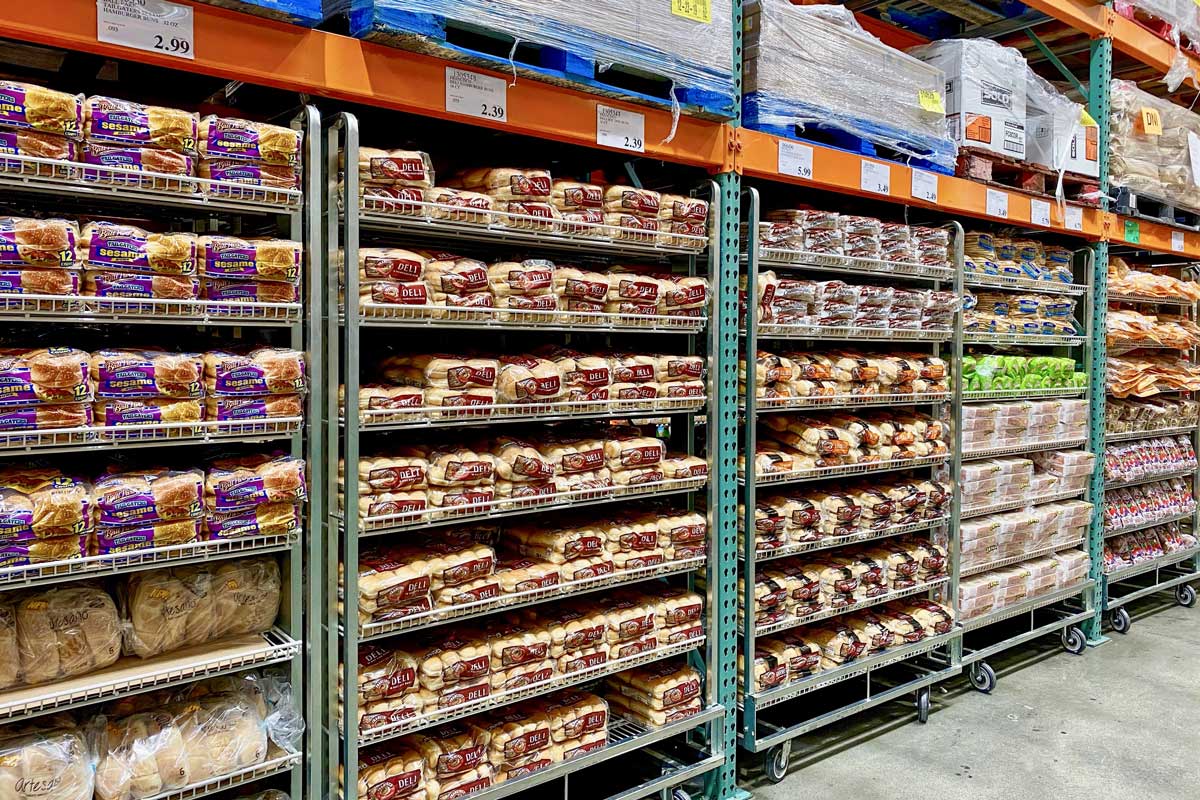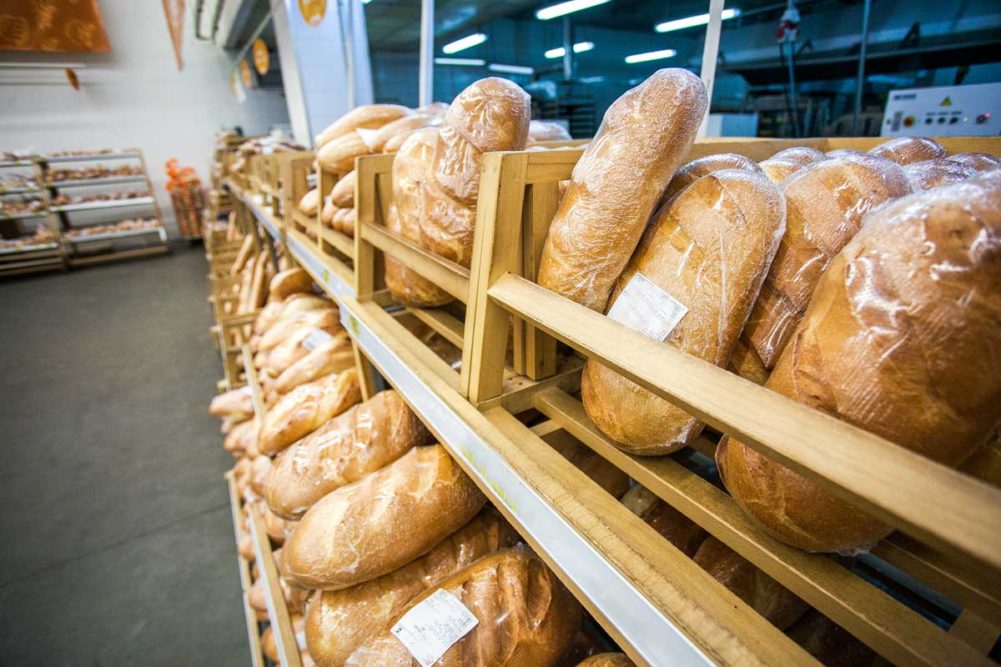It’s difficult to capture what the entire bread market looks like without considering all the different channels where bread is sold. For perspective, it’s important to know that total bread sales were growing steadily over the past several years.
IRI dollar sales for the past four years show that center store total bread category has a 0.6% CAGR and showed 1.2% growth, more than $186 million, at the end of 2019. Perimeter total bread sales have also seen growth with a four-year dollar CAGR of 2.6% and 2019 growth of 8.1%. Keep in mind that these trends were pre-pandemic and show how the dynamics have changed this year.
Tim Grzebinski, client insights principal for dairy and bakery for IRI, said another catalyst for change in 2019 was a decision by retailers like Walmart to convert some fixed weight bread items (UPCs that fall into the center-store category) into random weight bread items (UPCs that fall into the perimeter category).
“Some retailers did this conversion seeking more flexibility and the need to make bread assortment changes more swiftly,” Mr. Grzebinski explained. “This change is contributing to some of the growth we are seeing in perimeter bread.
During peak COVID-19 panic buying and pantry stocking, March 9 to 22, IRI data showed an all-time high of 40% dollar sales increase over the last year for perimeter bread sales. As the pandemic continued, growth rates slowed from March 23 to 29 showing 8% growth over the same period last year. Since then, between March 30 and Oct. 4, perimeter bread sales leveled off to an average growth rate of 3.5% compared to the same period in 2019.

“While we expect to see continued online bakery sales growth, we also anticipate continued perimeter bread growth as we move through the pandemic and as many consumers plan to work from home more often, eat out less and prepare more meals at home,” Mr. Grzebinski said.
Across food and beverage, online purchasing and curbside pickup have grown tremendously during the pandemic, and Mr. Grzebinski expects gains in e-commerce to stick. About 40% of grocery shoppers are using curbside pickup, and of the nearly one-third who are ordering their groceries for home delivery, more than half say they will continue to buy groceries that way moving forward. This change has dramatically changed the online dollar sales for bread.
Pre-pandemic online dollar sales for fresh bread and rolls vs. the same period a year ago were growing at more than 62%. Pandemic online dollar sales saw a spike of more than 133% — more than double the pre-pandemic growth rate — although online was at a smaller base.
“The growth of click and collect (curbside pickup) will continue to gain popularity as many consumers minimize time in physical grocery stores,” Mr. Grzebinski said.
Seeds for success
From new keto-friendly breads to innovations in seed inclusions and other high-protein ingredients, consumers are starting to put their money behind these specialty breads.
For example, bread bakers are beginning to pay more attention to sugar content, said Tom Vierhile, vice president of strategic insights, North America, for Innova Market Insights. Innova Market Insights shows that sugar reduction claims do not yet rank among the top 10 health claims for bread products, but they are growing quickly. Launches of new bread products making a “no added sugar” claim grew at a CAGR of 65.1% from 2016 to 2019.
Grupo Bimbo, Mexico City, for example, has reduced the sugar level in three sliced bread products while fortifying another 57 product varieties with added vitamins and fiber, according to an IBIS World study.
One example in 2020 was the launch of the Bimbo Bakeries USA, Horsham, Pa., Arnold’s brand’s Organic 22 Grains and Seeds bread. Each loaf contains a blend of flaxseed, chia and ancient grains.
“We heard consumers’ demand for more organic options in the bread aisle, and we are thrilled to be able to offer these quality products to our fans who value premium ingredients and the nutritional content of their bread,” said Marlene Sidhu, marketing director of Arnold, Brownberry and Oroweat Bread.
Carbohydrates continue to be an issue for bread sales. That may be why launches making a low, no or reduced carbohydrate claim expanded at 54.2% CAGR from 2016 to 2019, Innova Market Insights reported. The keto diet trend is also impacting innovation in bread and bread products. Launches using the verbiage “keto” or “ketogenic” were almost non-existent prior to 2017, Mr. Vierhile said.

In January, Franz Family Bakery, Portland, Ore., launched Keto White bread. The 18-oz loaves have zero net carbs, no added sugar and offer a high fiber claim. The bread is just 40 calories per slice.
“Already, launches of these have doubled through August 2020, compared to the full year count for 2019,” Mr. Vierhile pointed out.
Grain-free bread varieties are also sprouting up and gaining popularity. One example is New York-based Soozy’s Grain-Free Superseed bread that is sold in 11 oz packages. Soozy’s bread is available in two varieties: Original Sandwich Bread and Superseed Bread. Each slice has less than 8 grams of net carbs per serving and contains almond flour, coconut flour and avocado oil.
“When thinking about creating grain-free bread and bagels, it was important to us to ensure that the taste and texture was just as delicious, if not more so, than a traditional loaf of bread,” said Mason Sexton, co-founder and chief executive officer of Soozy’s Grain-Free. “All too often, health-conscious consumers are forced to choose between taste, texture and nutrition. It’s so challenging to find a product that has it all. We spent endless hours in the kitchen tweaking and refining our recipes so that we could achieve the light and fluffy texture we all know and love. We are so pleased to have the opportunity to bring our vision for this product line to life.”
However, the single most popular health claim for bread products was “no additives/preservatives,” Innova Market Insights discovered. This popularity, Mr. Vierhile said, is an indication that the clean label trend is alive and well for bread. Usage of this claim grew at a 10% CAGR from 2016 to 2019.
“This is an indication that bread and bread product makers continue to make cleaner ingredient lists a priority,” Mr. Vierhile said.
This article is an excerpt from the November 2020 issue of Baking & Snack. To read the entire feature on bread, click here.





